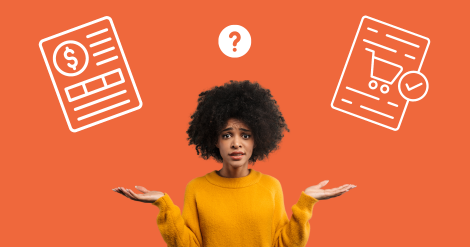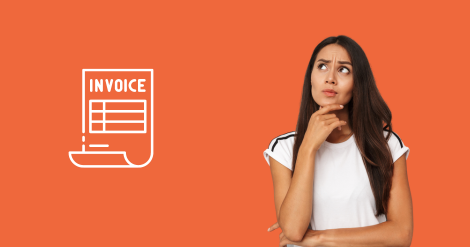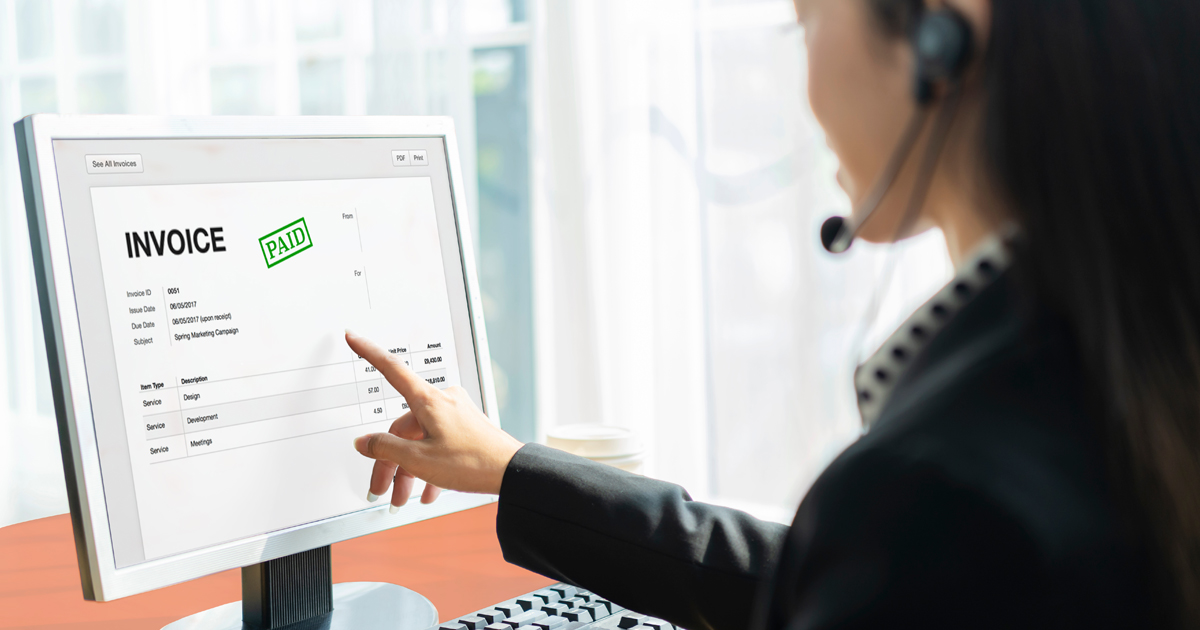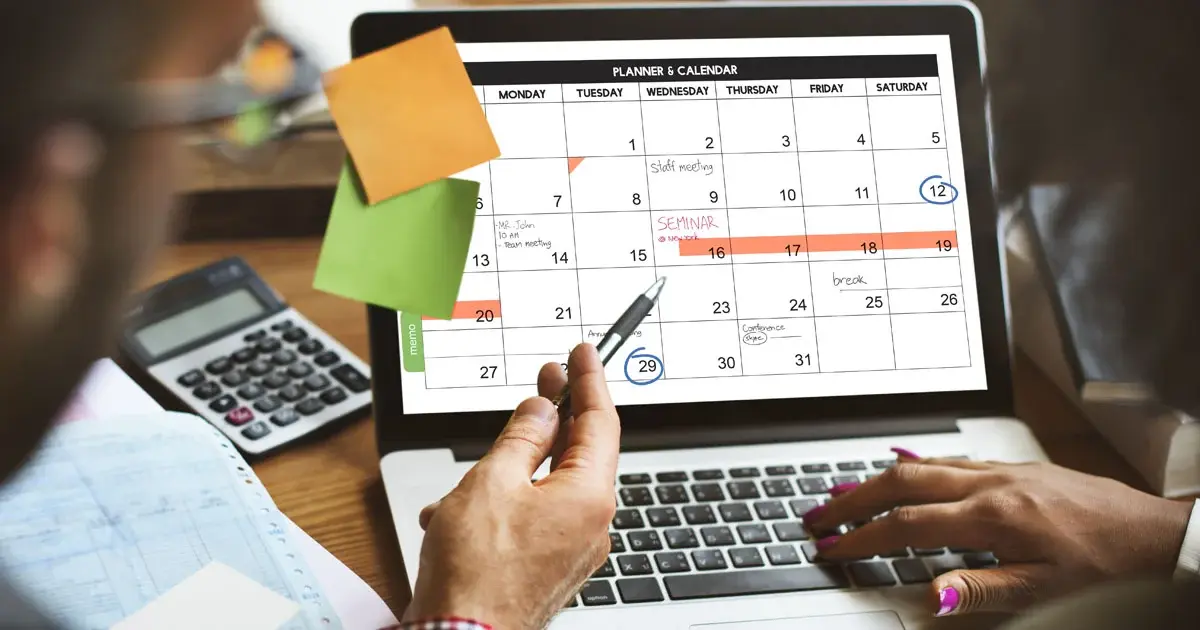Every business owner knows that keeping your finances in check means getting your paperwork right, especially when it comes to invoicing. As a cornerstone of your business's financial framework, invoices record transactions and ensure that cash flows smoothly between parties.
However, one of the tricky parts, especially for those new to business management, is telling the difference between sales and purchase invoices. Getting these mixed up can do more than delay payments. It could throw a wrench in your supply chain, leading to serious financial headaches.
Misinterpretations or errors in handling these invoices can also lead to disputes, misreported finances, or even tax issues. Understanding how these two types of invoices differ will help you maintain clarity in your accounts and safeguard the financial health of your enterprise. Keep reading as we break down the distinct roles of sales and purchase invoices in business transactions, helping you avoid costly mistakes and maintain optimal financial management.
What is a sales invoice?
A sales invoice is a document issued by a business to a customer, recording a transaction where goods or services have been provided. It serves as a formal request for payment, detailing the transaction and establishing an obligation on the part of the customer to pay the stated amount.
The primary purpose of a sales invoice is to provide a clear record of the sale, which supports the accuracy of financial statements and aids in managing accounts receivable. This ensures that businesses have a consistent cash flow, as it prompts timely payment from customers.
The key components of a sales invoice include:
- Seller’s information: This includes the name, address, and contact details of the business issuing the invoice.
- Buyer’s information: Similar to the seller's information, this section contains the name, address, and contact details of the customer.
- Date of issue: This is the date when the invoice is generated.
- Itemized list of goods/services sold: This detailed list describes each product or service provided, including quantities and prices.
- Total amount due: The total sum the buyer owes to the seller, often including taxes and discounts.
- Payment terms: These are the conditions under which the payment should be made, including the due date and acceptable payment methods. This section also outlines any penalties for late payment or rewards for early payment.
How sales invoices are used in business
Sales invoices are crucial for your business, primarily serving as formal requests for payment from customers for goods or services. These documents outline the amount due and establish payment deadlines, facilitating clear financial transactions. They are also vital for recording revenue, enabling accurate financial statements, and healthy cash flow management through effective accounts receivable tracking.
Sales invoices also serve as legal documentation for transactions, which is crucial for resolving disputes and ensuring compliance with tax regulations. Beyond day-to-day operations, analyzing the data from sales invoices can provide insights into buying trends, seasonal fluctuations, and customer preferences, informing your business strategy and marketing efforts.
What is a purchase invoice?
A purchase invoice is a document issued by a supplier to a buyer that details the items or services purchased and the amount owed. This document is crucial for the buyer's accounting as it substantiates the purchase and signals the obligation to pay the supplier. The primary purpose of a purchase invoice is to document the cost of purchases and facilitate the payment process.
Here are the key elements found in a purchase invoice:
- Supplier’s information: This section includes the name, address, and contact details of the company or individual issuing the invoice.
- Buyer’s information: This part of the invoice contains the name, address, and contact details of the purchasing party.
- Date of issue: This is the date when the invoice is created and issued to the buyer.
- Itemized list of goods/services purchased: This detailed list breaks down the specific goods or services purchased, including quantities and unit prices.
- Total amount due: This is the total sum the buyer owes to the supplier, calculated by summing all the items listed. It often includes additional charges like tax, shipping, or discounts applied to the transaction.
- Payment terms: These specify how and when the buyer should make payment, including any deadlines, accepted payment methods, and details about late payment fees or early payment discounts.
How purchase invoices are used in business
Purchase invoices are integral to the financial and operational frameworks of your business. They primarily record expenses, helping you maintain accurate financial statements and support budgeting efforts. By organizing these invoices, you ensure timely payments to suppliers, avoiding late fees and fostering good relationships.
These documents also play a crucial role in compliance and auditing by providing the necessary proof for tax purposes and verifying financial accuracy during audits. Purchase invoices also assist in managing your inventory by tracking the quantities and costs of goods bought, ensuring your stock levels are accurate.
Key differences between sales invoices and purchase invoices
Here’s a breakdown of how these two types of invoices differ:
Perspective
You, the seller, issue sales invoices to your customers when you sell goods or services. They signify your request for payment and are directly linked to your sales activities.
On the other hand, purchase invoices are what you receive from your suppliers. They detail the goods or services you have purchased and acknowledge your obligation to pay the supplier.
Purpose
The purpose of a sales invoice is to request payment from your customers. It acts as the final step in the sales process, officially documenting the sale and specifying the amount owed to you for the goods or services provided.
On the contrary, a purchase invoice serves as a record of your expenses. It details the cost of goods or services you have acquired for your business operations, helping you keep track of expenditures and manage your budget effectively.
Impact on financial statements
Sales invoices directly impact your business’s revenue and accounts receivable. Each sales invoice increases your total revenue and the balance in your accounts receivable, indicating money that customers owe you.
However, purchase invoices impact your expenses and accounts payable. These invoices increase the expenses recorded in your financial statements and raise the amount in your accounts payable, reflecting what you owe suppliers.
Importance of managing both types of invoices
Effective management of both sales and purchase invoices is essential for the smooth operation of your business. Let’s explore how proficient handling of these invoices benefits your business:
Cash flow management
Managing your sales invoices well ensures that you bill your customers accurately and timely, leading to faster payments and a steady income stream. Furthermore, keeping a tight rein on your purchase invoices helps you track when payments are due.
As a result, you can avoid late fees and plan expenditures to match your cash flow. Together, these practices ensure that cash comes in and goes out of your business in a balanced and predictable manner, preventing cash shortages and financial strain.
Financial reporting
Both types of invoices are foundational to accurate financial reporting. Sales invoices reflect your revenue generation, while purchase invoices document your expenses.
By diligently recording each invoice, you ensure that your financial reports—like profit and loss statements and balance sheets—are accurate. This precision is crucial not only for internal decision-making but also for compliance with tax laws and regulations.
Business relationships
Clear and accurate invoicing reflects well on your professionalism and helps you maintain healthy business relationships. With sales invoices, you show your customers that you value transparency and efficiency, which can encourage prompt payments and repeat business.
Similarly, by handling purchase invoices correctly, you establish trust with your suppliers. Paying on time as per the agreed terms demonstrates your reliability as a business partner. In turn, suppliers are more likely to offer you favorable terms or prioritization in future transactions.
Best practices for handling sales and purchase invoices
Adopt the following best practices that you should adopt when handling sales and purchase invoices:
Timely issuance and recording
Make it a priority to issue and record invoices as soon as transactions occur. For sales invoices, this means sending an invoice immediately after delivering a product or service.
Similarly, when you receive a purchase invoice, record it immediately to ensure your financial records are up-to-date. Prompt action prevents backlogs, keeps your cash flow healthy, and ensures all transactions are accounted for in the correct financial period.
Accurate information
Double-check all details on both sales and purchase invoices, including prices, quantities, tax calculations, terms, and the identities of the buyer and seller. Accurate invoices reduce the risk of disputes with customers and suppliers, which can delay payments and damage business relationships. Ensuring every detail is correct facilitates smoother audits and compliance with tax regulations.
Using invoicing software
Incorporating invoicing software into your business processes can enhance the efficiency and accuracy of your invoicing. This software automates much of the invoicing process, from creating and sending invoices to recording them in your financial system. The benefits of using such tools include:
- Reduced errors: Automation minimizes human error in data entry and calculations.
- Time savings: Software can generate and send invoices quickly and integrate directly with your accounting systems for seamless record-keeping.
- Improved cash flow management: Many invoicing software solutions include features that help track due dates and send automatic reminders to clients, helping ensure timely payments.
Get paid faster with Chaser
Understanding the differences between sales and purchase invoices is vital for effective financial management in your business. While sales invoices help you track revenue and manage receivables, purchase invoices are crucial for recording expenses and managing payables. Handling both types effectively ensures accuracy in your financial statements and maintains healthy cash flow.
Adopting best practices and utilizing software like Chaser to optimize your invoicing process can boost efficiency. Chaser automates your accounts receivable management and integrates seamlessly with popular accounting software, reducing manual effort and enhancing payment timeliness. Start a 10-day free trial or book a demo to see how Chaser can transform your invoicing process and ensure your invoices are paid on time.




